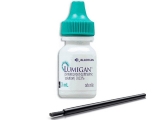How to open a pharmacy
Opening a pharmacy can be a rewarding and lucrative business venture for those passionate about healthcare and entrepreneurship. However, it requires careful planning and execution to ensure success in a highly regulated industry. This step-by-step guide will provide you with an overview of the key considerations and actions required to launch your own pharmacy business.
1. Research and Planning: Before diving into the world of pharmacy ownership, it is crucial to conduct thorough research and develop a comprehensive business plan. This includes analyzing the local market, understanding the competition, and identifying target customer segments. A well-designed business plan will serve as a roadmap for your pharmacy's success and help secure financing.
2. Legal and Regulatory Compliance: Opening a pharmacy entails navigating through various legal and regulatory requirements. You will need to obtain the necessary licenses and permits, such as a pharmacy license, DEA registration, and state-specific permits. Compliance with federal and state laws regarding prescription drugs, patient privacy, and record-keeping is also essential.
3. Financing: Starting a pharmacy can require a significant financial investment. You will need to secure funding for various expenses such as leasing or purchasing a location, purchasing inventory, hiring staff, and marketing your business. Explore different financing options, including traditional bank loans, small business grants, or partnerships with investors.
4. Location and Layout: Choosing the right location for your pharmacy is critical for attracting customers and ensuring accessibility. Consider factors such as proximity to healthcare facilities, population demographics, and competition. Your pharmacy's layout should be designed for efficient workflows, compliance with regulations, and a pleasant customer experience.
5. Staffing and Services: Building a skilled and knowledgeable team of pharmacists and pharmacy technicians is crucial for the success of your business. Hire individuals who are licensed, have expertise in various areas of pharmacy practice, and possess excellent customer service skills. Additionally, consider offering additional services such as medication therapy management, immunizations, and health screenings to differentiate your pharmacy from competitors.
6. Inventory Management: Efficient inventory management is vital for maintaining adequate stock levels, minimizing waste, and ensuring the availability of essential medications. Develop relationships with reliable pharmaceutical wholesalers and implement inventory tracking systems to streamline the ordering, receiving, and dispensing processes.
7. Marketing and Promotion: Once your pharmacy is up and running, effective marketing and promotion strategies are essential for attracting and retaining customers. Utilize both traditional and digital marketing channels, such as local advertising, social media, and online platforms, to raise awareness about your pharmacy and its services. Collaborate with healthcare providers and community organizations to build partnerships and generate referrals.
8. Ongoing Training and Compliance: To stay competitive and compliant in the rapidly evolving pharmacy industry, continuous learning and adherence to regulations are essential. Invest in ongoing training for your staff, keep up with emerging trends and technologies, and ensure compliance with changing laws and regulations.
In conclusion, opening a pharmacy requires careful planning, attention to detail, and a passion for providing quality healthcare services. By following this step-by-step guide, you will be well-equipped to launch and grow your own successful pharmacy business.
Step 1: Research the Pharmacy Industry
Before opening a pharmacy, conducting thorough research on the pharmacy industry is essential. This step will help you gather valuable information about the industry, understand the market trends, and identify any potential challenges or opportunities.
1.1 Identify the target market: Determine the specific demographic and geographic area you want to serve. Consider factors such as population density, age groups, and healthcare needs to establish your target market.
1.2 Analyze the competition: Research existing pharmacies in your target area. Identify the services they offer, their pricing strategies, and their customer base. This analysis will help you determine your competitive advantage and develop a unique selling proposition.
1.3 Understand regulations: Familiarize yourself with the legal and regulatory requirements for operating a pharmacy. Research licensing, permits, and other legal considerations to ensure compliance with local, state, and federal regulations.
1.4 Stay updated on industry trends: Keep up with the latest developments in the pharmacy industry, including new medications, treatments, and technology. This will help you stay competitive and provide the best possible service to your customers.
1.5 Financial analysis: Conduct a financial analysis to determine the potential profitability of opening a pharmacy. Consider the cost of acquiring or leasing a location, purchasing inventory, hiring staff, and other expenses. This analysis will help you assess the feasibility of your business venture.
1.6 Networking and partnerships: Build relationships with professionals in the healthcare industry, such as doctors, hospitals, and insurance providers. Networking and forming partnerships can help you establish a strong referral network and enhance your credibility in the industry.
1.7 Marketing strategies: Research effective marketing strategies for pharmacies, such as online advertising, direct mail campaigns, and community outreach. Understanding the best ways to promote your pharmacy will be crucial for attracting and retaining customers.
Step 2: Create a Business Plan
Identify your market
Before opening a pharmacy, it's important to identify your target market. This could include factors such as the demographics and needs of the local community, any existing competition in the area, and potential opportunities for growth. Conducting market research will help you gain insights into the demand for pharmaceutical services and products.
Develop a mission statement
A clear mission statement will guide your pharmacy business and help define its purpose. It should succinctly communicate your pharmacy's values and goals, and serve as a reference point for making business decisions. For example, your mission statement could focus on providing personalized and high-quality healthcare services to the local community.
Outline your services and products
In your business plan, outline the specific services and products your pharmacy will offer. These may include prescription medications, over-the-counter drugs, health and wellness products, as well as additional services such as medication counseling, home delivery, or specialized compounding services. Consider what sets your pharmacy apart from competitors and how you can meet the needs of your target market.
Financial projections and budgeting
It's crucial to include financial projections and budgeting in your business plan. This will help you estimate the costs involved in starting and operating your pharmacy, as well as project your potential revenue. Include details such as startup costs, operational expenses, anticipated sales, and expected profit margins. This information will be essential when seeking financing or attracting investors.
Marketing and advertising strategies
Outline your marketing and advertising strategies in your business plan. Consider how you will promote your pharmacy and reach your target audience. This could involve both traditional methods such as print advertising and direct mail, as well as digital strategies like social media marketing and online advertising. Additionally, consider building relationships with healthcare professionals in the community who can refer patients to your pharmacy.
Creating a comprehensive business plan will not only help you navigate the startup phase, but also serve as a roadmap for the future growth and success of your pharmacy. Be sure to regularly review and update your business plan as your business evolves.
Step 3: Secure Funding for Your Pharmacy
Securing funding for your pharmacy is a crucial step in launching your own pharmacy business. Without sufficient funds, you may struggle to cover the initial costs of establishing your pharmacy, including licensing fees, lease agreements, and inventory purchases.
There are several options available to secure funding for your pharmacy:
- Personal Savings: Utilize your personal savings to invest in your pharmacy business. This can provide you with a sense of financial security and independence.
- Bank Loans: Approach banks or financial institutions for a business loan. Provide them with a detailed business plan and financial projections to demonstrate the viability and profitability of your pharmacy.
- Investors: Seek out potential investors who are willing to provide funds for your pharmacy. Present a compelling case for why your pharmacy business will be successful and offer a return on investment.
- Government Grants and Programs: Research and apply for government grants and programs that are available for small business owners, including those in the healthcare industry. These grants can provide significant financial assistance.
It is important to carefully consider each funding option and determine which one is most suitable for your situation. Take the time to research and prepare a thorough plan that outlines how the funds will be used and the potential risks and rewards of your pharmacy business. By securing adequate funding, you can ensure a strong start to your pharmacy and increase your chances of long-term success.
Step 4: Find a Location for Your Pharmacy
Choosing the right location for your pharmacy is crucial to the success of your business. You will want to find a location that is convenient for your target customers, has a high population density, and is easily accessible by both car and public transportation.
Market research: Conduct market research to identify potential locations with a high demand for pharmacy services. Look for areas with a growing population, an aging population, or a lack of competition from other pharmacies.
Demographics: Consider the demographics of the area where you plan to open your pharmacy. Are there enough potential customers in the area? Will they be able to afford your products and services?
Competition: Evaluate the competition in the area. Are there already several pharmacies in the vicinity? If so, you may want to consider a different location or find a niche market that is not well served by the existing pharmacies.
Accessibility: Ensure that your chosen location is easily accessible for your target customers. It should have ample parking, be located near main roads or public transportation, and have good visibility from the street.
Space requirements: Determine the space requirements for your pharmacy. Consider the size and layout of the building, as well as any specific requirements for storage, consultation rooms, and other necessary facilities.
Cost: Consider the cost of the location, including rent or mortgage payments, utilities, and any necessary renovation or construction costs. Make sure that the location fits within your budget and projected financials.
Regulations: Check local zoning and licensing regulations to ensure that the chosen location is suitable for a pharmacy. Obtain all necessary permits and licenses before opening your pharmacy.
By carefully considering these factors and conducting thorough research, you can find the perfect location for your pharmacy business that will help ensure its success.
Step 5: Obtain the Necessary Licenses and Permits
Before opening a pharmacy, you must ensure that you have obtained all the necessary licenses and permits. These licenses and permits are essential to legally operate a pharmacy and comply with regulations and guidelines set by the government and regulatory bodies.
The specific licenses and permits required may vary depending on your country or region, so it is important to research and understand the requirements in your area. Some common licenses and permits needed to open a pharmacy may include:
- Pharmacy License: This is the main license that allows you to operate a pharmacy. It is typically issued by the regulatory authority responsible for overseeing pharmacies in your area.
- Business License: You may need a general business license to legally operate any type of business, including a pharmacy. This license is usually obtained from the local government or municipality.
- Drug Control License: This license is necessary to handle and dispense pharmaceutical drugs. It ensures that you meet the standards for maintaining the safety and integrity of drugs and prevents any unauthorized sale or distribution.
- Professional License: If you are a licensed pharmacist, you will need to ensure that your professional license is valid and up to date. This license is usually obtained through the relevant professional licensing board or authority.
In addition to these licenses, you may also need to obtain other permits or registrations depending on the specific activities and services you plan to offer in your pharmacy. These could include permits for offering specialized services such as compounding medications, administering vaccinations, or providing clinical pharmacy services.
It is crucial to research and understand the licensing and permit requirements in your area and ensure that you comply with all regulations before opening your pharmacy. Failing to obtain the necessary licenses and permits can result in fines, closure of the pharmacy, or legal consequences.
Step 6: Stock Your Pharmacy and Hire Staff
Stocking Your Pharmacy
To ensure the success of your pharmacy, it is important to carefully stock your inventory with a wide range of medications and healthcare products. You need to establish relationships with pharmaceutical suppliers who can provide you with the necessary medications in a timely manner. Consider factors such as the demand for certain medications in your area, the expiration dates of medications, and any special storage requirements. It is also essential to keep track of your inventory and regularly order new supplies to meet customer needs.
Hiring Staff
Building a knowledgeable and trustworthy team is vital for the smooth operation of your pharmacy. You will need to hire pharmacists, pharmacy technicians, and other support staff who are licensed and qualified to work in the pharmaceutical industry. Look for candidates who have a strong understanding of pharmaceuticals and excellent customer service skills. Consider conducting interviews and background checks to ensure you have a reliable and competent staff. Additionally, it is important to provide ongoing training and professional development opportunities to keep your staff up to date with the latest industry practices and regulations.
Key Points:
- Carefully stock your inventory with a wide range of medications and healthcare products.
- Establish relationships with pharmaceutical suppliers to ensure timely delivery of medications.
- Consider factors such as demand, expiration dates, and storage requirements when ordering medications.
- Hire licensed and qualified staff with strong pharmaceutical knowledge and customer service skills.
- Conduct interviews and background checks to ensure reliability and competence.
- Provide ongoing training and professional development opportunities for your staff.
By taking the time to stock your pharmacy with the necessary medications and hiring a competent and reliable team, you are setting yourself up for success in the pharmaceutical industry.
Follow us on Twitter @Pharmaceuticals #Pharmacy
Subscribe on YouTube @PharmaceuticalsYouTube





Be the first to comment on "How to open a pharmacy"